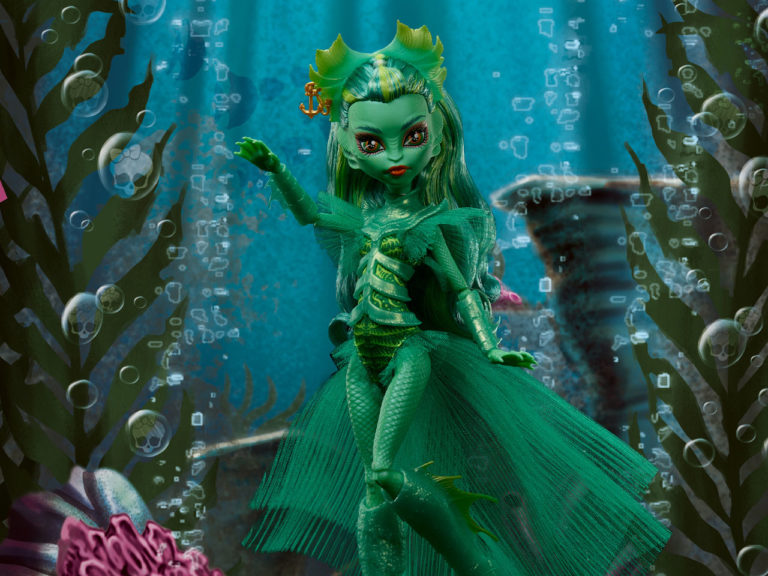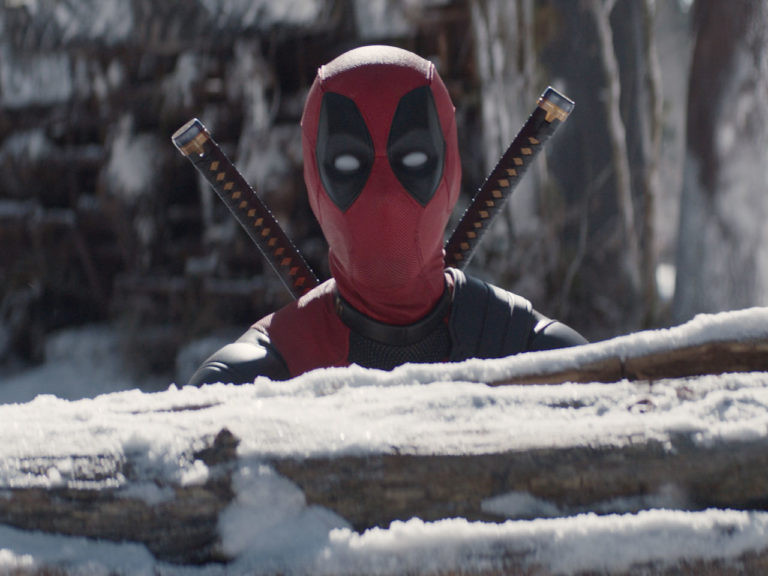

It’s the year 2019. With the rise of the internet and the publicity that it allows, it’s easier than ever for us to fight – and easier than ever to be manipulated. In a world where the public doesn’t trust journalists, journalists don’t trust their employers, and the rich control the technology we use every day, it’s easy to see why writers would want to write content around this landscape. Political commentary in comic books is a topic that many fans are hesitant about, but it’s created some of the most popular comics of all time: Watchmen and The Dark Knight Returns both being particularly relevant examples.
Because of this, I’m not immediately hesitant about a DC comic that tackles the rhetoric of the Trump era: a villain using a political figure to manipulate the masses and sew chaos is, in essence, a good idea. It’s been done before, and it’s been done well – and if any DC franchise is fit to tackle political satire, it would be The Dark Knight Returns.
I’m writing all of this as a preface to say that I don’t think the intentions behind this comic are poor, and I don’t think it’s impossible to make a good comic around this topic, even in the DC universe.
I do think it’s impossible to make this comic good though, because holy shit. This book – written by the (in)famous Frank Miller and illustrated by Rafael Grampá – is kind of a hot mess.

Look, most of what I could say about Frank Miller has already been said a great many times. Some of his recent work was assisted by Brian Azzarello, an author who I feel very mixed on, but their collaborations seemed to be quite successful: they took the sentiments that Frank Miller wanted to express and delivered them in an accessible and enjoyable format. Had this book continued with that partnership, I might feel differently about it. It didn’t, however; Miller has gone solo once again in the latest book in his weird Miller-verse, which apparently consists of Batman: Year One, Superman: Year One, All-Star Batman and Robin, The Last Crusade, The Dark Knight Returns, The Dark Knight Strikes Again, DKIII: The Master Race, and now this latest chapter.
This story is set several years after The Master Race, and it follows the next generation of this world’s superheroes: Carrie Kelly as Batwoman, and Superman’s children, Lara and Jonathan Kent. In many ways, it seems like this book is the logical end point to all of Miller’s previous works in this world: the older heroes have stepped back (Batman isn’t in this book at all!), and the younger generation has come forward to take the reins, tackling the same political turmoil and supervillainy in a different form. It’s also the logical end point because it’s not very good and I want it to end.

Let’s begin with the characters. Carrie Kelley is Miller’s most recognizable character here, and while Rafael Grampá’s design work on her Batwoman costume is nothing short of fantastic, her depiction within the story feels more like Miller’s Batman. I’m sure this is deliberate, as she has grown from young and curious to capable and ruthless (like her mentor) – but it also means that less of her original appeal shines through. Lara is no longer the antagonist she was in previous stories, but her attitude is the exact same: angry, smug, and entirely resentful of humanity. I imagine this is intended to be the “begrudging anti-hero” arc, though it sometimes just feels like she is being an inconsistent character. Jon, meanwhile, is the character who’s grown the most between books; the child has turned from baby to Boss Baby, a hyperintelligent and extraordinarily powerful boy while still being no older than five. This is probably the most interesting part of the story, with Lara essentially learning from her younger brother more than he learns from her. It’s certainly one of the more original trios I’ve seen in a while, which especially frustrates me: despite the buzz that’s already going on around this comic, this story didn’t have to be bad. Why is it bad? Well…

I guess I need to address the Republican in the room now. Yes, the Joker is back (somehow – they kind of imply it’s not the original), and yes, he’s using Donald Trump as a patsy for his scheme to sew chaos across the country. Yes, he’s working with Darkseid. No, it doesn’t really make sense.
I’m honestly not going to talk about this that much, because there’s really not much to say; Miller’s attempts at satire don’t really go beyond very base-level, Stephen Colbert-style digs at Trump’s showmanship and speech patterns (“You’re gonna love every inch of it! I’m talking streets so safe you can let your kids go play and not even think about ‘em! It’s gonna be huge! It’s gonna be large! It’s gonna be me!”). This might shock you all to your very core, but I don’t particularly like Donald Trump – however, in an environment where he is the target of every writer, you need to be effective to make biting commentary that stands out, which this is not. I’d very much like more writers to zone in on the essence of Trump as a figure who uses performance to mask their actually harmful policy, but you won’t find such nuance here. Seeing as this is the only political element in this book, it really doesn’t make for much more than something to spark outrage and heated comments on miscellaneous articles drawing attention to it (hello!).

All of this is filtered through Miller’s peculiar brand of writing: lots and LOTS and LOTS of text. Of course, it’s not just the heavy dialogue and narration that makes his work unique. One might find —
— if one were to look, that is —
That Miller always talks like this.
With lots of periods. And lots of bold.
Highlights.
Like this.
Like this.
And so on.

To give Miller credit, you can tell there’s a certain passion in what he writes; to me, his work reads almost like a blog post, where he’s venting all his feelings about the current day and age through the lenses of different characters. It comes through particularly prominently in the dialogue, which is anything but accurate to how the current generation talks. I actually found this to be a problem in The Dark Knight Returns as well, but I chalked it down to my being from a different generation. However, this book is about my generation, so I feel like I have some ability to comment on how this book doesn’t feel in touch with people my age. This feels like a book about the world as seen from someone not involved in it; while that’s somewhat prudent considering the main characters are aliens, it also isolates the reader, and only makes me wish I was reading the story this could have been.
The one positive I can really say about this book is that the art is amazing – Rafael Grampá and colorist Jordie Bellaire really knocked it out of the park. I have nitpicks, of course – I’m not a fan of some of the faces Grampá draws – but they’re nitpicks, and clearly stylistic choices. There are so many pages in this book that are absolutely stunning, and they almost make up for the points that drag this comic down. Have a look at this genuinely fantastic page, where Miller wisely chose not to clog the page with dialogue, giving Grampá and Bellaire the chance to really shine.

This isn’t the only wonderful page in this book, either; in fact, if you had to get this book at all, it’d be because almost every page has delightful, distinctive artwork, that one could almost consider iconic if it weren’t for the story it was wrapped in. Another highlight is Carrie Kelley’s fight with the Joker, which feels reminiscent of the wacky, psychedelic colours of The Dark Knight Strikes Again, while retaining its quality.

The problem with the artwork doesn’t lie with the artwork at all, in fact; it lies with how much Miller’s writing has to obscure it! Not only is the writing already frustrating, but the text boxes can often fill up far more of the panel than they should. It doesn’t help that Jonathan and Carrie’s narration looks the exact same, and every character switches between first and third person perspectives on a dime. Also, apparently the characters can hear Darkseid’s narration at times? The entire thing is unclear, and that’s the problem. If I gave you a Bob Ross painting and glued a bunch of words on top of it, eventually you’ll struggle to appreciate the painting. Much like the election this book is portraying, this book is an inciter of chaos; and much like the real election, it’s been no time at all and I’m over it already.

The end result of this hodgepodge is a question: what can you tolerate for the sake of good artwork? Were you able to pick up All-Star Batman and Robin for Jim Lee’s astounding content? Would you have enjoyed The Dark Knight Strikes Again if the artwork was more comprehensible? This is likely the factor that will influence whether or not you purchase this. For me, it’s not worth it.
Recommended If:
- You’re a fan of every Frank Miller book.
- Grampá’s artwork is worth the price of admission, even if it’s a little marred by text.
- You want to see more Carrie Kelley, who is being grossly underutilized by DC.
Overall
I won’t pretend there aren’t things to enjoy from this book, but I can’t find myself liking it as a full package. Despite the wonderful artwork, all I can think of is how ironic it is that this story is much like many politicians: full of sound and fury, signifying nothing.
Score: 3/10
——————
Disclaimer: DC Comics provided Batman News with a copy of this comic for the purpose of this review.


